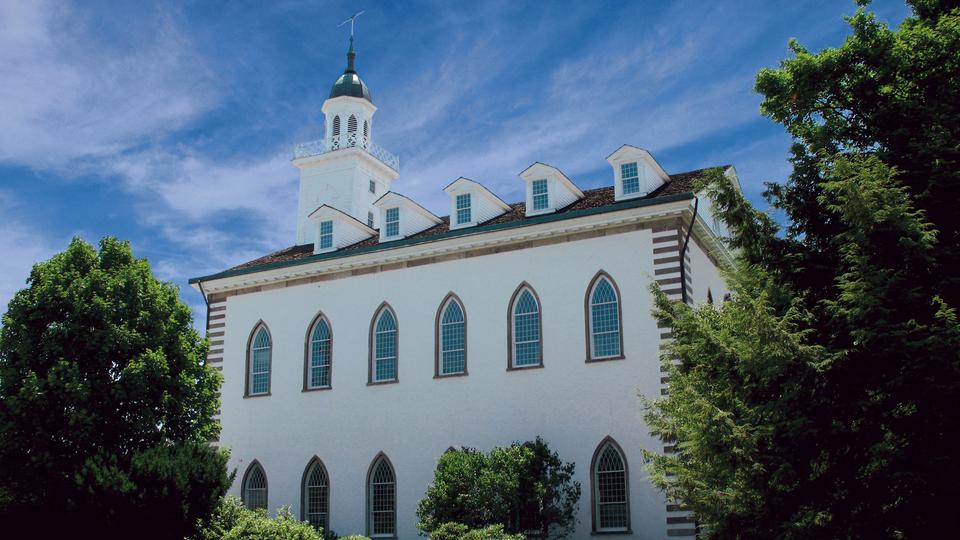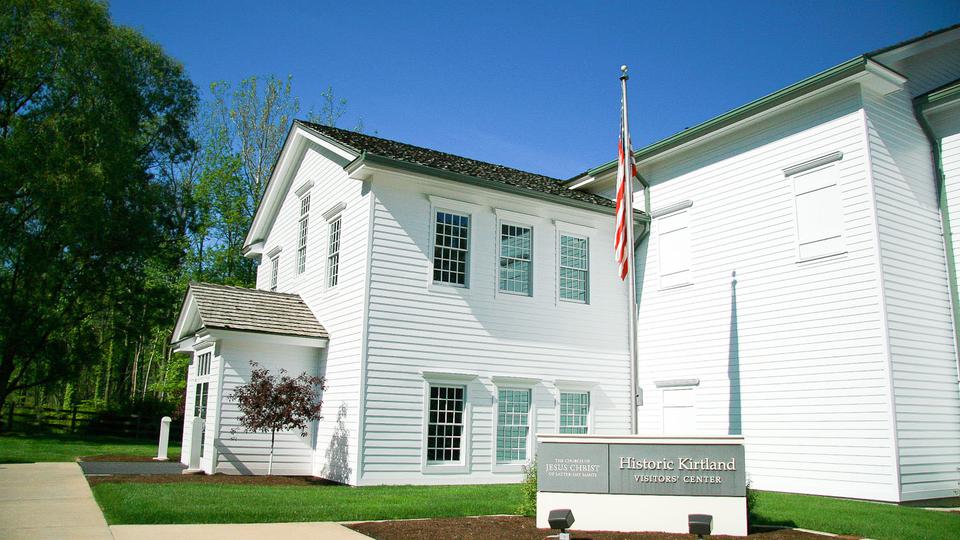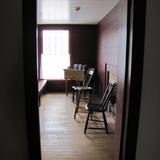A glimpse of the 19th-century American frontier unfolds in the exploration of restored sites at Historic Kirtland, Ohio. Settled by early members of The Church of Jesus Christ of Latter-day Saints, this rural community shares stories of struggle, sacrifice and dedication, stories that relate to contemporary social and economic events.
Background
Nestled along the east branch of the Chagrin River, Kirtland served as the organizational headquarters of the infant Church from 1831 until 1838. Membership grew from a handful of members to well over 2,000 before persecution and the financial upheaval of the times forced the Mormons to move on to western settlements in Missouri and Illinois.
The Kirtland years were one of the most remarkable periods in Church history, according to Milton V. Backman, professor emeritus at Brigham Young University.
“Here a vast amount of doctrinal information was unfolded to Joseph Smith, the Church leader. Members gained an increased understanding of one subject, then another,” Backman said in a series about Kirtland on the Mormon Channel.
In Kirtland, Latter-day Saints not only increased in religious knowledge, but Joseph Smith also introduced the organizational patterns of the Church that still function today.
“The basic structure of Church organization as we know it today was unfolded in Ohio,” Backman adds.
Kirtland also served as the first gathering place for the growing membership of the Church, a situation that encouraged the camaraderie and fellowship members feel in local units today.
| The Kirtland, Ohio temple, the first temple built by The Church of Jesus Christ of Latter-day Saints, is now owned by the Community of Christ. 2011 Intellectual Reserve, Inc. All rights reserved | 1 / 5 |
What to See and Do
The Church completed a historic restoration of Kirtland in 2003, and today, the village opens doors to the past economic, cultural and spiritual evidences of family life on the frontier of the 1830s. A visitors’ center offers an overview of the entire restoration, including a 24-minute film depicting the story of Kirtland’s development.
The Newel K. Whitney store defines the lifestyles of the pioneering residents. Crocks, baskets, barrels and bolts of fabric line the shelves of the early mercantile. Daily life of the time revolved around the store and the bartering system that provided sustenance for the community.
The Whitney store also served as one of the residences of Joseph Smith and his family during their sojourn in Kirtland. Smith studied and taught on the upper level of the store. There he organized a formal school where adult members studied not only newly defined religious doctrines, but academic subjects as well.
The nearby home of Newel and Elizabeth Ann Whitney is also open for tours.
The community schoolhouse, restored and dedicated in 2003 as a part of the Ohio State Bicentennial activities, provided a spot for the children to receive an education. The building is now restored with a rough-plank exterior and is rebuilt on the site of an 1819 predecessor.
Much of the economic livelihood of the growing community came from the establishment of an ashery, a processing plant that produced potash, a valuable ingredient in manufacturing processes of the time. The early settlers also established their own sawmill. Both of these businesses were part of the 2003 restoration.
The John Johnson Inn opens the door to the former publishing house for the community newspaper. The nearby Johnson and Isaac Morley farms, both temporary residences of the Joseph Smith family during their sojourn in Ohio, broaden the historic perspective of the area.
The Kirtland Temple, the first temple in this dispensation and built over three years, is presently owned and operated by the Community of Christ faith. A $3 preservation fee maintains it, while all the other sites are free to visitors. The temple recently celebrated the 175th anniversary of its 1830s construction.
At the Stannard Stone Quarry, the source of the stone for the temple construction, chisel marks evidence the effort required to build the house of worship.
Restoration of all the sites is carefully researched and supported by historically accurate information. Skilled craftsmen reconstructed each of the sites with building techniques used in the period.
“Visitors may not recognize the detail we’ve implemented to preserve these historical materials,” explained Steven L. Olsen, senior curator for the Church History Department. “But it is worth it to accurately portray the stories told. In some respects, these historical sites are a three-dimensional witness to the history of the Church.”
“Witnessing the events of Church history as they unfold here in Kirtland brings a vitality to the spirit of our visitors,” says W. Brent Edman, who, with his wife, Kay, serves as the director of the Historic Kirtland Visitors' Center. “As they see the courageous stories of the past unwind, our guests often comment about the sacrifices of the settlers and wonder at their dedication.”
A firsthand look at the historic development of the Kirtland community can be viewed in an annual musical production, “This Is Kirtland.” According to local resident Kristen J. Gough, the production, in its eighth season, runs the first three weekends in July, features a 60-member cast and is performed without charge at the LDS meetinghouse at 8751 Kirtland Road, Kirtland, Ohio, at 7:30 pm. Seats are available on a first-come basis.
Visitor Information
The restored Kirtland village, located at the intersection of Ohio routes 306 and 615, can be reached via exit 193 on Interstate 90. Travel accommodations are readily available less than 10 minutes from the historic sites.
7800 Kirtland-Chardon Road
Kirtland, Ohio 44094
440-256-9805 (Main)
Hours
Monday-Saturday: 9:00 a.m. to 7:00 p.m.
Sunday: 11:30 a.m. to 7:00 p.m.
The sites close at 5:00 p.m. during the winter.
All sites are closed on Thanksgiving, Christmas Day and New Year's Day.






